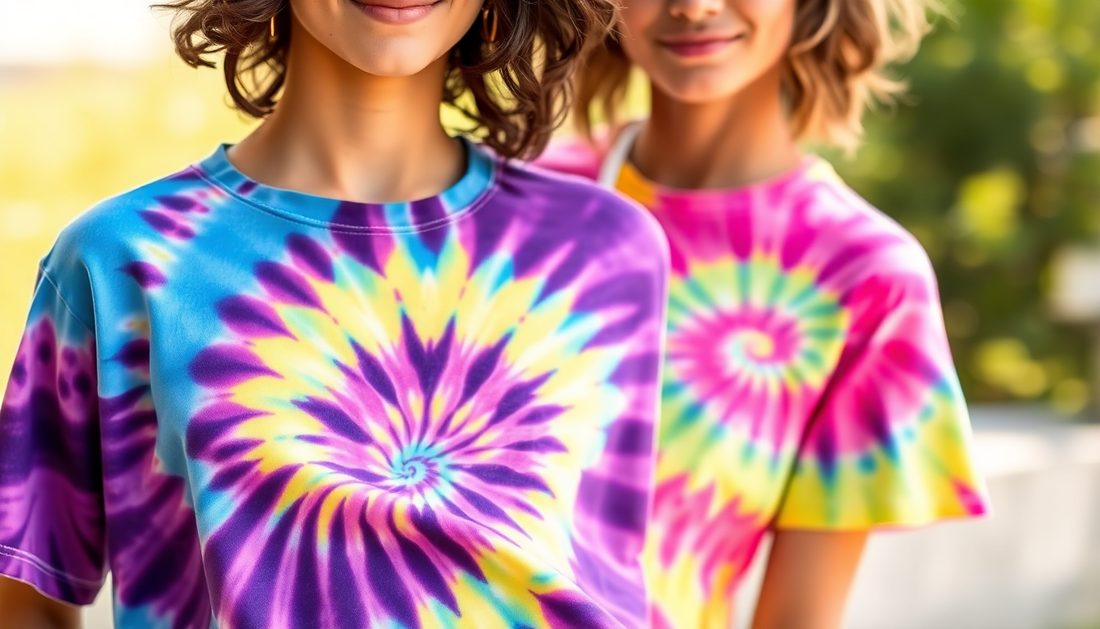
The Story of Tie-Dye: From Woodstock to Modern Runways
Tie-dye, a vibrant and captivating art form, has a rich history that spans generations and cultures. From its humble beginnings as a traditional textile technique in Asia to its iconic association with the counterculture movement of the 1960s, tie-dye has evolved into a versatile and sought-after fashion statement.
However, it was during the 1960s that tie-dye truly captured the imagination of the world. The counterculture movement of the era, with its emphasis on individuality, self-expression, and a rejection of mainstream norms, embraced tie-dye as a symbol of their ideals. As the decades passed, tie-dye's popularity ebbed and flowed, but it never truly disappeared from the fashion landscape.
At Ashok & Babali, we celebrate the rich history and enduring appeal of tie-dye. Our clothing, crafted with care and attention to detail, pays homage to the artistry and craftsmanship that has defined this unique textile technique for centuries. By working with skilled artisans from Pushkar and the surrounding villages, we ensure that each piece is not only visually stunning but also ethically and sustainably produced.

The Evolution of Tie-Dye
From its ancient roots in Asia to its iconic association with the counterculture movement, tie-dye has undergone a remarkable transformation. Over the centuries, the art form has adapted to the changing tastes and trends of the times, while still maintaining its core essence of self-expression and individuality.
a. The Ancient Roots of Tie-Dye
Tie-dye, as a textile technique, has been practiced for centuries in various parts of the world, particularly in Asia. In India, the art of "Bandhani" has been a cherished tradition, with skilled artisans using intricate binding and dyeing methods to create stunning textiles. Similarly, in Japan, the art of "Shibori" has been a revered craft, with its unique patterns and textures.

b. The Counterculture Movement of the 1960s
It was during the 1960s that tie-dye truly captured the imagination of the world. The counterculture movement of the era, with its emphasis on individuality, self-expression, and a rejection of mainstream norms, embraced tie-dye as a symbol of their ideals. The vibrant, psychedelic patterns of tie-dye became a hallmark of the Woodstock generation, adorning the clothing and accessories of those who sought to challenge the status quo.
c. The Modern Resurgence of Tie-Dye
As the decades passed, tie-dye's popularity ebbed and flowed, but it never truly disappeared from the fashion landscape. In the 1990s, the resurgence of grunge and alternative music scenes once again brought tie-dye into the spotlight, with bands and their fans embracing the bold, rebellious aesthetic.

Today, tie-dye has transcended its counterculture roots and found its way onto the runways of high-fashion designers. Luxury brands have embraced the art form, incorporating it into their collections and reinterpreting it in innovative ways. From bold, abstract patterns to more subtle, ombre-like effects, tie-dye has become a versatile and sought-after trend, appealing to a wide range of fashion-conscious consumers.
At Ashok & Babali, we are proud to be a part of this rich and ever-evolving story of tie-dye. By working with skilled artisans and embracing sustainable and ethical practices, we strive to honor the traditions of the past while also pushing the boundaries of what is possible with this captivating textile technique.